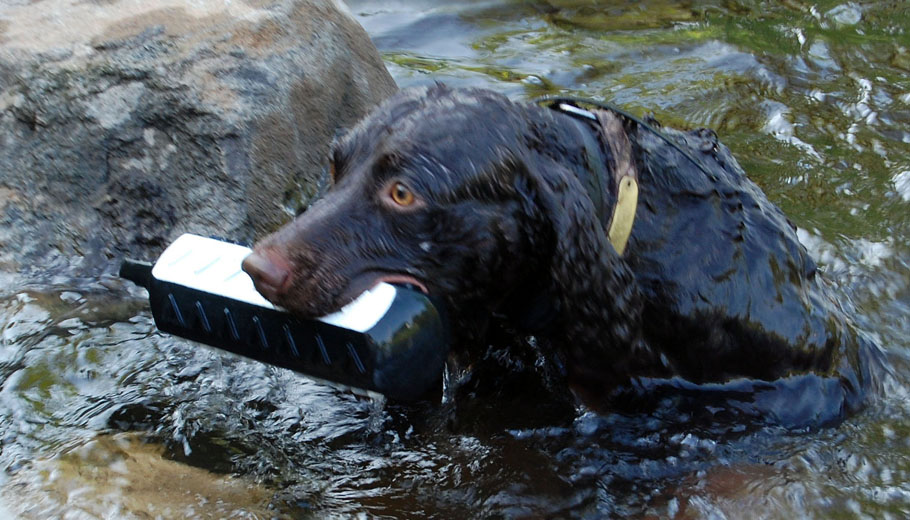
Dangerous fungus along local waterways
By James Card
In past years, Dr. Karen Hayes would only see about four dogs per year with blastomycosis.
“This year it seemed like every time we turned around we were suspecting it or they were positive. Over the summer there were a lot,” said Hayes.
Blastomycosis (blasto for short), is a fungal infection caused by inhaling spores of the Blastomyces fungus. It is microscopic and found in soil and decaying wood and leaves.
Damp riparian areas tend to harbor the fungus. Once disturbed, the spores become airborne and can be inhaled. It affects the lungs and spreads to other parts of the body.
The chance of survival for dogs with blasto is 50%. All kinds of mammals can get blasto but dogs tend to be most susceptible. Nose to the ground, they paw, dig, scratch and sniff the earth and breathe in fungal spores.
People can also catch blastomycosis and it became better known locally when an outbreak occurred on the Little Wolf River near New London in 2015. Caught by tubers, there were 51 confirmed cases, including the death of a 21-year-old Menasha man.
Signs, symptoms
“The symptoms seem to change a bit. This year was a bad year. It’s nasty because it shows up in so many different ways. It’s like a mimic,” said Hayes.
The symptoms Hayes has most commonly seen are weepy, inflamed eyes, sore joints, coughing, high temperature, swollen lymph nodes and sores or boils that do not heal. If the infection travels to the eyes, the dog could go blind. If the dog is an unneutered male, it can go into the testicles and cause re-infection.
“But now it hasn’t been so much the coughing, it’s been more of the weepy eyes and a limp. It can get into the bones, too. And if you take an x-ray, it looks like bone cancer,” said Hayes.
She said spring and fall are the most likely season to be exposed to the spores because of the moist conditions but the symptoms could appear quickly or many months later after the spores have settled in the body.
“You don’t have to be exposed this year to get it this year. It could be something you were exposed to and it was latent—just waiting for you to get a little older or when your immune system isn’t so good anymore.” said Hayes, speaking for both humans and animals.
“The dogs are like sentinels. If your dog gets blasto, then you know you are at risk if you are going to garden or do shore work. It’s just that they are here and we are up here,” said Hayes as she lifted her hand from dog-nose level up to her nose.
Treatment, prevention
There are two good developments for treating blasto. Previously, the infection was diagnosed by a blood test that was unreliable. There is now the MiraVista urine test that is “pretty darn accurate” according to Hayes.
The second development is cheaper generic drugs are on the market. Treatment will last four to six months and costs approximately $100 per month. Before generics it was double the cost. Dogs are given anti-fungal medicines that end with an –azole suffix. If a dog is struggling, steroids may be used. The dogs are tested again after the treatment period to determine if the medication should be continued. Blasto will be suspected as an illness for the rest of the dog’s life.
The safest landscape is sandy soil that drains well but the Waupaca area holds a bounty of creeks, rivers, wetlands, ponds and lakes.
“It really likes moist areas. Along riverbanks it is very common. That river over by Smokey Valley Road—almost every family along there has had a dog with blasto,” she said referring to the nearby Little Wolf River. “Millponds or any body of water that appears to be stagnant. It doesn’t appear to be a problem on the Chain [o’ Lakes].”
“Do you keep them away from the creeks?” Hayes sighed. “But then you’re not enjoying life with your dog. There is no way to prevent it. Obviously there are tons of dogs out there in the water and digging and they are not getting it. I’m sure they are getting exposed here and there so their immune system must be tamping it down.”
Early diagnosis and treatment is the key. If neighbor’s dog gets it, it is an alert for other dog owners in the area to look for signs in their own dogs.
Hayes once diagnosed a cat with blasto and it was a mystery. It was an indoor cat and she surmised that it acquired blasto from mud tracked in on the husband’s work boots or from soil in potted plants.
